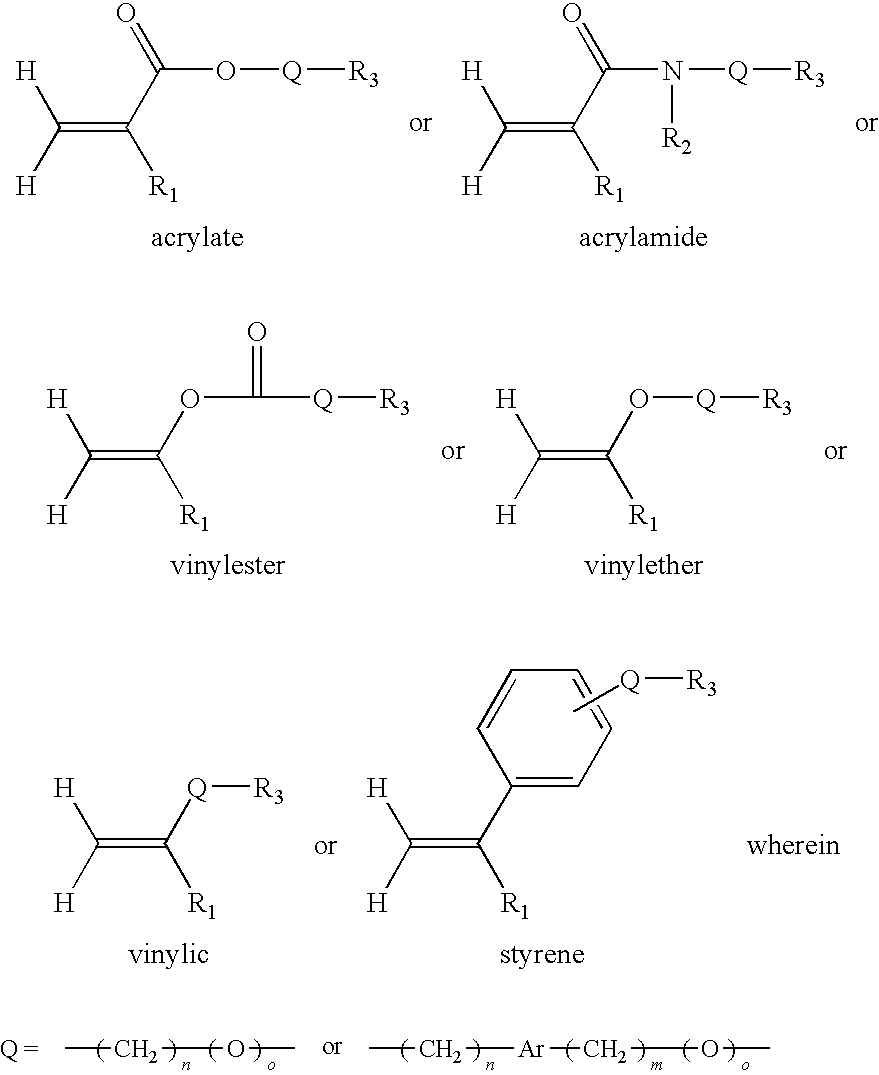Photopolymerisable composition
a composition and polymer technology, applied in the field of photopolymerisable compositions and elements, can solve the problems of long drying time, laborious and time-consuming post-treatment, and minimal production time and/or maximum throughput and simple,
- Summary
- Abstract
- Description
- Claims
- Application Information
AI Technical Summary
Benefits of technology
Problems solved by technology
Method used
Image
Examples
example 1
1. Preparation of a Coating Solution of a Photopolymerisable Composition of the Present Invention
[0072]A coating solution of the components listed in the following table was prepared.
ComponentAmountMonomer “SR-349” (available from Sartomer) 0.5 mlMixture of ricinus or castor oil and palm kernel 0.05 mloil (1:1)Photoinitiator “CGI 7460” (available from Ciba 0.01 mlSpecialty Chemicals Inc.; 40% solution in di-chloromethane)Sensitising agent “Safranin O” (ca. 3% solution0.005 mlin ethanol) (0.1 g Safranin O in 3 g ethanol)Wetting agent “Schwego-Fluor 8083” (available0.005 mlfrom Fa. Bernd Schwegmann)
[0073]The monomer “SR-349” is an ethoxylated bisphenol-A-diacrylate of the following structural formula:
[0074]The photoinitiator “CGI 7460” is a compound of the following structural formula:
[0075]The sensitising agent “Safranin O” is the compound 3,7-diamino-2,8-dimethyl-5-phenyl-phenaziniumchloride.
[0076]The wetting agent Schwego-Fluor 8038™ is a fluorocarbo polymer.
[0077]The coating solut...
PUM
 Login to View More
Login to View More Abstract
Description
Claims
Application Information
 Login to View More
Login to View More - R&D
- Intellectual Property
- Life Sciences
- Materials
- Tech Scout
- Unparalleled Data Quality
- Higher Quality Content
- 60% Fewer Hallucinations
Browse by: Latest US Patents, China's latest patents, Technical Efficacy Thesaurus, Application Domain, Technology Topic, Popular Technical Reports.
© 2025 PatSnap. All rights reserved.Legal|Privacy policy|Modern Slavery Act Transparency Statement|Sitemap|About US| Contact US: help@patsnap.com



